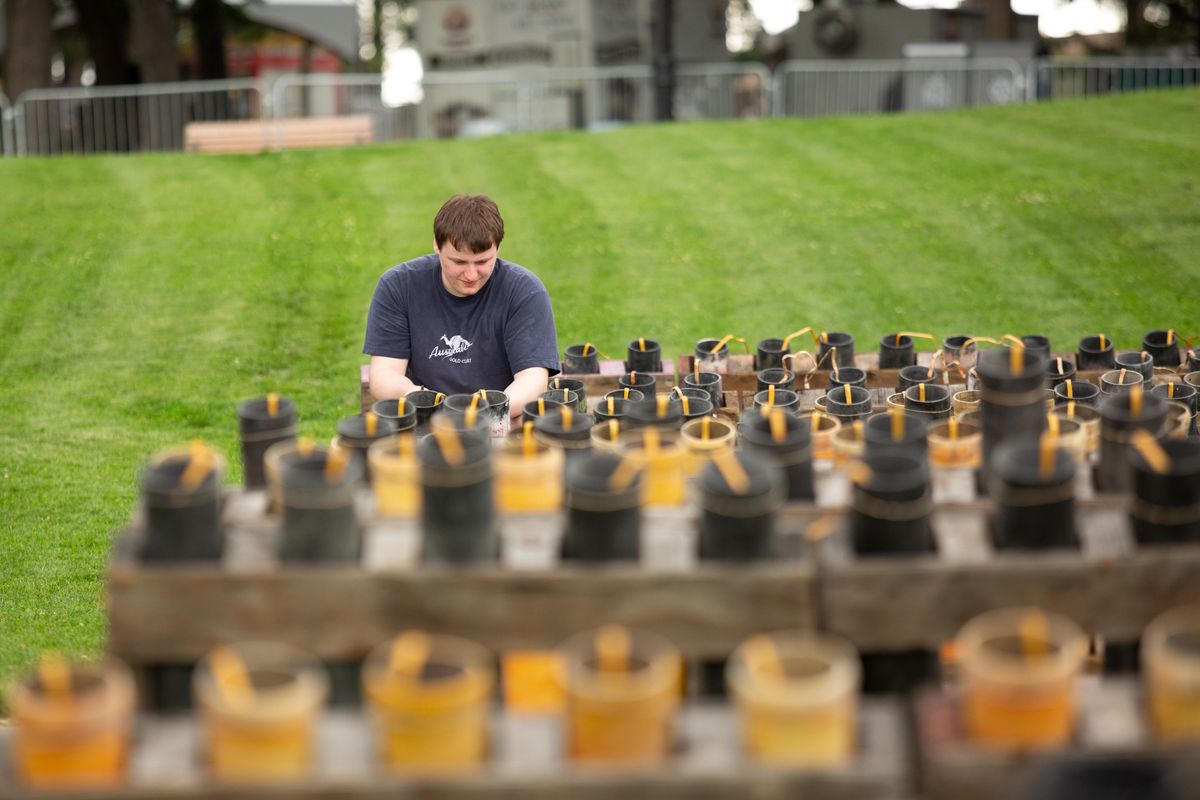Behind the sparks: How Spokane gets its Fourth of July fireworks

For spectators at this year’s July Fourth fireworks show at Riverfront Park, little more is required than to just show up.
But for Dale Cyr, the show’s project manager, the spectacle takes months of planning and over a dozen hands. Cyr works for Pyro Spectaculars, the company the city of Spokane pays to run the Riverfront show.
This year, the city spent roughly $17,000 for the Fourth of July fireworks, said Fianna Dickson with Spokane Parks and Recreation.
The event takes months of planning and preparation, Cyr said.
“I usually get started in about February, and I contact my team members to see who’s in and who’s out,” he said. “I have a core group, but it changes every year. This year there’s 15 people on my group, but usually there’s more.”
Pyro technicians, or “pyros,” as they call themselves, choreograph shows based on nine “sections” in the sky. There is an upper, middle and lower third each divided into left, right and center sections.
That way, Cyr said, “we won’t shoot 25 effects in the high sky and leave everything below them blank.”
Different fireworks also burst at varying times, depending on the type and how high they’re launched. So if a pyro wants multiple fireworks to explode at the same moment on different levels, they need to launch each at precisely the right time.
Firework choreography requires technical skill and creativity, said Rich Vaughan, the former head of the Riverfront show. Now overseeing all fireworks shows in the region for Pyro Spectaculars, he said choreography is one of his favorite parts of the job.
“I take a very artistic approach to what we’re doing,” Vaughan said. “Anybody can go out there and just throw fireworks in the sky.”
Many shows, including the one at Riverfront, are choreographed to music.
Timing is crucial to not only ensure the right set of fireworks burst at the same time but also on the right musical note.
“The first shell will go up on the first note of music, and the last shell will go up a few moments before the last note,” Cyr said.
Pyros also use a wide variety of different fireworks to create a truly spectacular event.
Many technicians will open with an attention-grabbing “salute” – a firework that shoots into the sky with a sparkling trail and explodes with a large clap and a flash of light.
Once the show begins, different effects, colors and sizes of fireworks fill the sky until the music ends.
Among the fireworks are Dragon’s Eggs, which burst and then crackle in an egg-shaped formation; Willows with soft tails of silver or gold sparks; and Comets, which blast into the air with long trails of sparks behind them.
Audience favorites are always the odd and exciting, Vaughan said. Fireworks like the Fish, which squirm away from each other like fish swimming through the sky, get big crown reactions.
When it comes time to start the show, crews wear the same type of protective gear firefighters do. There’s a risk to the job, Cyr said, but it’s calculated.
Passers-by often wonder if they can get a behind-the-scenes look, and the answer is always the same.
“There are absolutely no tours,” Cyr said with the brusqueness of a man who’s been asked a few too many times.
The show takes several days to set up and has strict 24-hour security. On launch night, Spokane police and park security conduct a sweep and remain close to the launch site to ensure no one gets in, said Dickson of the parks and recreation department.
The team of assistants go through extensive background checks, and the shipments, routes, parking and even timing of deliveries are heavily regulated, Cyr said. Significant risks exist, but many are mitigated by precautionary steps taken by the pyros.
“When we say don’t try this at home, we mean it,” Cyr said. “You wanna play with the big boys, come join the big boys. We’ll teach you how to do it safe.”